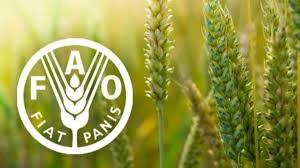Food Security: Measures to mitigate El nino weather patterns paid off in Africa, others – FAO

The anticipatory actions put in place over the last two years by the Food and Agriculture Organization of the United Nations (FAO) to mitigate the extreme weather events caused by El Niño in 23 countries have protected the food security and livelihoods of over 1.6 million people.
Declared in July 2023 and projected to last until mid-2024, the current El Niño event is one of the five strongest on record, and its climate extremes have affected from 40 to 50 million people worldwide, mostly in Southern and Eastern Africa, Latin America and the Caribbean, Asia and the Pacific.
Using modeling based on previous El Niño-driven weather patterns, FAO said it acted swiftly to mitigate its effects in 2023-2024, launching together with governments and partners anticipatory actions in countries at risk.
Examples of measures on the ground include the timely distribution of drought-tolerant seeds and the construction of water harvesters in the Dry Corridor in Central America; repairing riverbank breakage points in Somalia to protect 40.000 hectares of cropland from expected floods; and leveraging social protection programs to aid vulnerable farmers with cash support ahead of drought in the Philippines.
These interventions were “very beneficial” for vulnerable populations exposed to El Niño-induced extreme weather events, said Dunja Dujanovic, FAO senior emergency and rehabilitation officer.
FAO assessments show that anticipatory actions are a cost-effective way to protect populations from shocks. Every USD1 invested in anticipatory action can create a return for farming families of more than USD 7 in avoided losses and added benefits.
Dujanovic highlighted that the success of FAO’s anticipatory actions during this El Niño event was still not at sufficient scale to avert the full scale of the crisis, and that such actions should be urgently replicated and significantly scaled up when early warning and forecasts show that vulnerable populations are exposed to weather and climatic shocks.
With El Niño now weakening, another seasonal climatic phenomenon causing extreme weather events (La Niña) could further exacerbate food insecurity.
La Niña impacts are expected to be noticeable in some regions in the second half of 2024, said Dujanovic, urging to take actions to better anticipate, mitigate and be prepared to respond accordingly.
Dujanovic said that communities affected by extreme weather events, including those caused by climate change, are often populations already affected by multiple crises driving high levels of acute food insecurity.
She recalled that, in many cases, those who are already vulnerable are most at risk at losing their livelihood, so anticipatory action is crucial to mitigate the risk of impact of such shocks on these frontline communities.
Source: africanews
